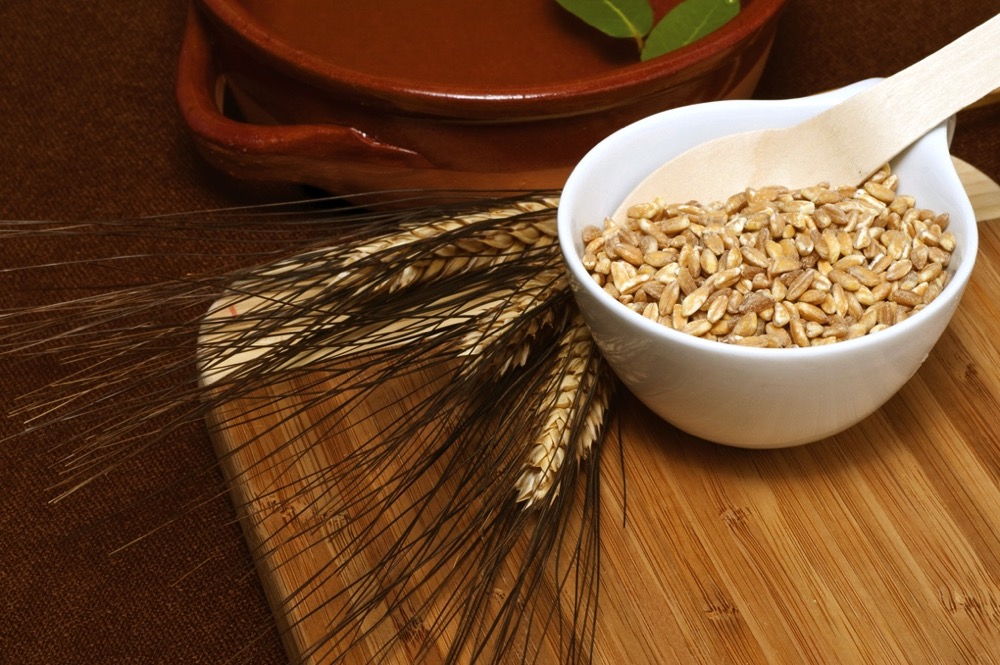Better-adapted heritage wheat varieties crucial

Three buyers of ancient wheats say they would love to see better value chain infrastructure to connect them with Ontario growers.
Read Also

Researchers use metabolic model to study temperature stress on corn
A research team led by Nebraska scientists has built the largest-ever metabolic model of corn to study how temperature stress…
They were part of a panel discussion at the recent Guelph Organic Conference about growing heritage grains for quality flours. But the sole grower on the panel cautioned that, at least with some cultivars, there’s work to be done on developing varieties that are well-adapted to the province’s climate and growing conditions.
Why it matters: Any grower pondering the introduction of a niche crop needs assurance that they won’t get stuck with the crop – or stuck with a significant financial loss – at harvest time.
Ripley-area grower and broker Harro Wehrmann offered financial margin comparisons for so-called “heritage wheats” and spelt. These are varieties typically developed after wheat flour came into greater use due to the roller mill’s invention in 1870, but before the Green Revolution of around 1950, and so-called “ancient wheats” that were grown for centuries before 1870.
Wehrmann said in August 2023, organic hard red winter wheat brought $700/tonne in Ontario, giving a gross return of approximately $3,100 per acre if the yield was four to six tonnes per acre.
For spelt, a grower needed $750/tonne to earn similar returns. Spelt can achieve similar yields under organic management, but a 35 per cent hull content must be factored in.
With current varieties of the ancient grain einkorn, however, the hull content is closer to 50 per cent and the expected yield in Ontario is half a tonne per acre. A grower would need to fetch at least $2,000/tonne to earn the same margin as heritage wheat or spelt.
Wehrmann, who grows the ancient wheat khorasan (also called kamut, which is a corporate-owned trademark name) on land owned in Saskatchewan, says both einkorn and khorasan are susceptible to high humidity, leading to significant risks for mildew, fusarium and head blight when grown in Ontario. Without humidity-tolerant varieties that yield at least two tonnes per acre, “there’s no economic argument” for growing ancient wheats in this province, he says.
Even so, the three buyers on the Organic Conference panel would like to see a community of Ontario-based growers develop and expand.
Gabrielle Prud’homme of Almanac Urban Mill in Ottawa said “there’s no grain infrastructure in Ontario” for heritage and ancient grains. Almanac, which launched at the height of the COVID-19 pandemic, sources much of its heritage grain from the west.
In Ontario, farmers who grow these varieties on a small scale typically don’t have access to dehullers, seed cleaners or other infrastructure needed to make it work.
“There needs to be a little more grain chain in Ontario,” says Prud’homme.
Melissa McKeown of 1847 Stone Milling believes there’s a huge potential for market growth. Citing information provided by the supplier of kitchen-scale home mills that her Fergus-based company began selling two years ago, she said 12.5 per cent of German households grind their own grains to make flour.
“There are entire sections in German grocery stores devoted to grains, with a wide range of branding and product offerings.”
Speaking with Farmtario after the conference, McKeown said there’s a long-established trend for members of the home-schooling community in Ontario to grind grains in their kitchens. But thanks in large part to social media sharing by “foodies” concerned about gluten intolerance and folic acid intolerance (commercial-scale millers typically fortify flours with folic acid), home-scale milling is now growing in popularity worldwide.
“Each year, our sales (of the kitchen mills) increase. It’s growing quite a bit.”
The company sources much of its red fife wheat and spelt from certified organic growers in Ontario. But as with Almanac, 1847 Stone Milling, which operates four small mills inside a heritage barn on the McKeown family farm, typically looks to the west for khorasan.
Wehrmann said that, globally, emmer and khorasan are still grown and milled in regions of high temperatures and low rainfall. While einkorn is recognized as the “original” wheat (the translation from German is “one kernel per hull”), emmer eventually took over in use for food.
In certain climatic zones, emmer will grow as a winter wheat. It’s also widely used in modern wheat breeding programs, Wehrmann said, because it can express a range of desirable characteristics.
A challenge in Ontario for anyone growing wheat-related crops is the crop’s natural reaction to day length. With the summer solstice, the clock starts ticking in Ontario for protein level and vegetative growth. On the Prairies, where the higher latitude means the sun is lower in the sky at solstice, this transition doesn’t happen as quickly.
Wehrmann said he got hooked on growing and marketing heritage grains in the 1980s, when he helped manage the fledgling OntarBio Organic Farmers cooperative. Word went out one year that a buyer was looking to purchase spelt and several growers jumped on board. Then the buyer backed out and Wehrmann was tasked with scouring European markets to salvage the growers’ margins.
Ever since, Wehrmann Farms Ltd. has included heritage grains among the certified organic crops it grows and handles.
In more recent years, he agreed with McKeown that “there has started to be a certain cool factor on social media” about heritage and ancient grains.
Still, he advises caution for any Ontario grower thinking of joining the trend. With so many risk factors inherent under Ontario conditions, in addition to the high cost of renting or buying farmland, he suggests they reject any decision to grow ancient wheats based on futures market speculation.
“If you do that, I can pretty much guarantee you’ll be doing a lot of home baking,” Wehrmann said.
Source: Farmtario.com

